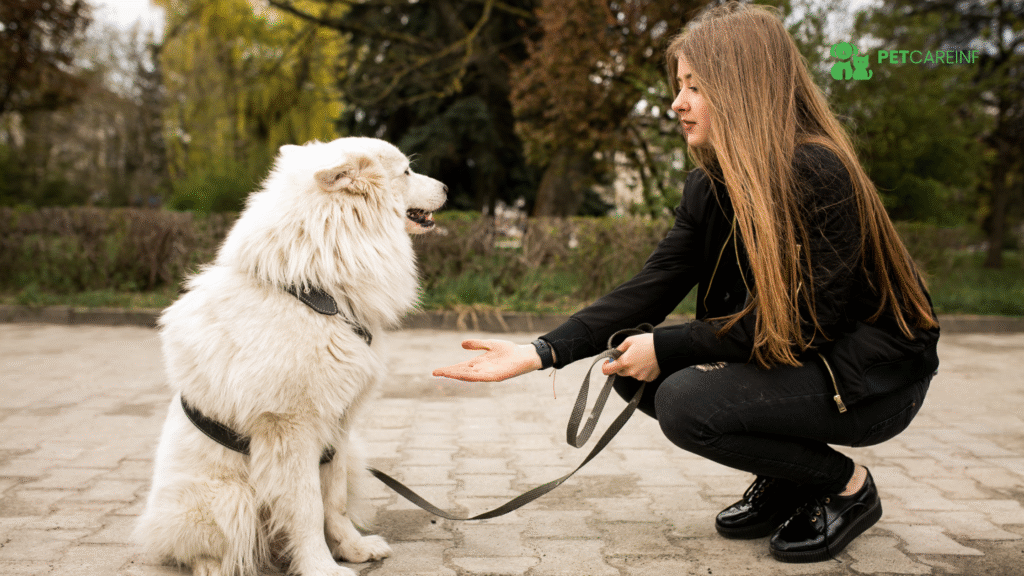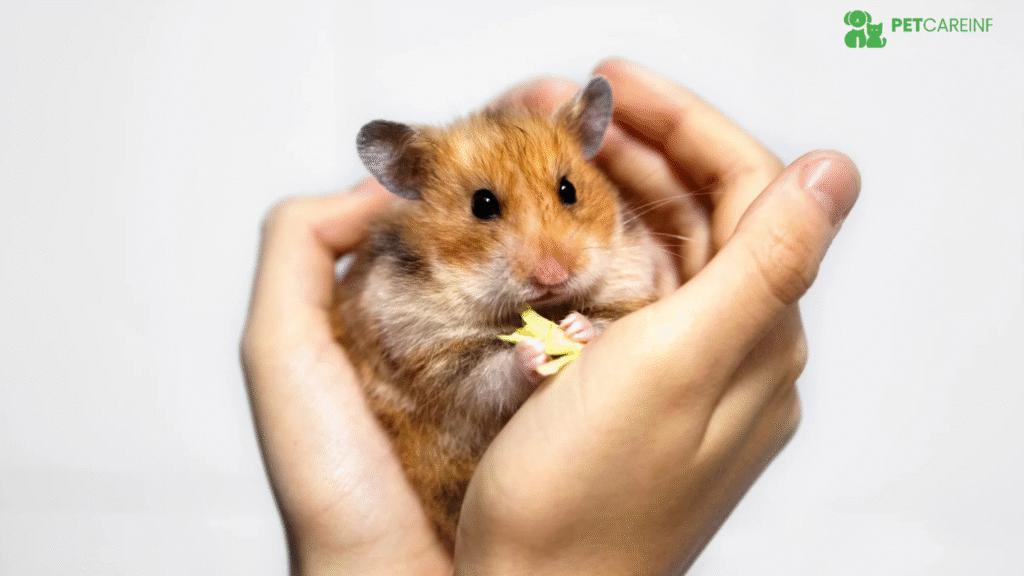Table of Contents
The best way to make sure your dog is happy and well-behaved is to give them dog training. Teaching your dog good habits will help you trust them, lower your stress, and make life easier. Training can be easy, exciting, and rewarding for both you and your dog if you use the appropriate methods.
Why Dog Training Matters
Teaching your dog tricks is only one part of training. It’s about making sure you and your pet have a safe, respectful, and fun relationship. Your dog learns to understand what you say and do when you train them. This builds trust and makes your relationship stronger.
Simple training can help you get rid of bad habits like chewing, jumping, or barking. A dog that has structure is calmer and easier to handle. You can avoid mishaps by using commands like “come,” “sit,” and “stay.” Trained dogs are safer and more reliable, whether they are near traffic or kids.
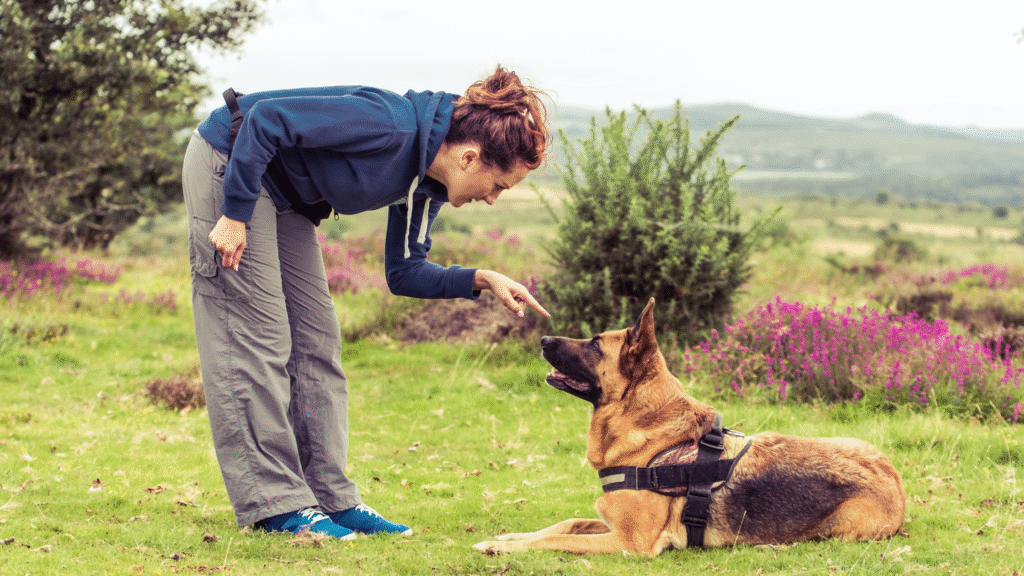

When to Start Training a Dog
You can start training at any age, but the sooner you do, the easier it will be. Both puppies and adult dogs fare better when things are structured and consistent.
Puppy Training Basics
You can start socializing your dog when it is 8 weeks old. At this point, puppies should meet new people, hear new sounds, and explore places that are secure. Crate training, house training, and teaching biting control are also part of early training. These basics are the building blocks of excellent behavior.
Training Adult Dogs
Even though it may take longer, older dogs can still learn new habits. The most important thing is to be patient and promote excellent behavior instead of penalizing mistakes. Adult dogs may unlearn bad habits and follow directions just as well as pups if you do it the proper way.
Signs It’s Time to Begin
It’s evident that your dog needs training if they yank on the leash, don’t listen to simple commands, or jump on guests. Starting early can help stop certain tendencies from getting tougher to address later. Just a few minutes of training every day can make a tremendous difference.
Core Training Methods Explained
There are various techniques to train dogs, but the best ones are based on kindness and consistency. Here are some of the most frequent ways of dog training how to.
Positive Reinforcement
This strategy works for most dogs because it is based on rewards. You give your dog a treat every time it does something well. You can give them snacks, praise, or even their favorite toy. Over time, youngsters learn that good behavior leads to favorable results.
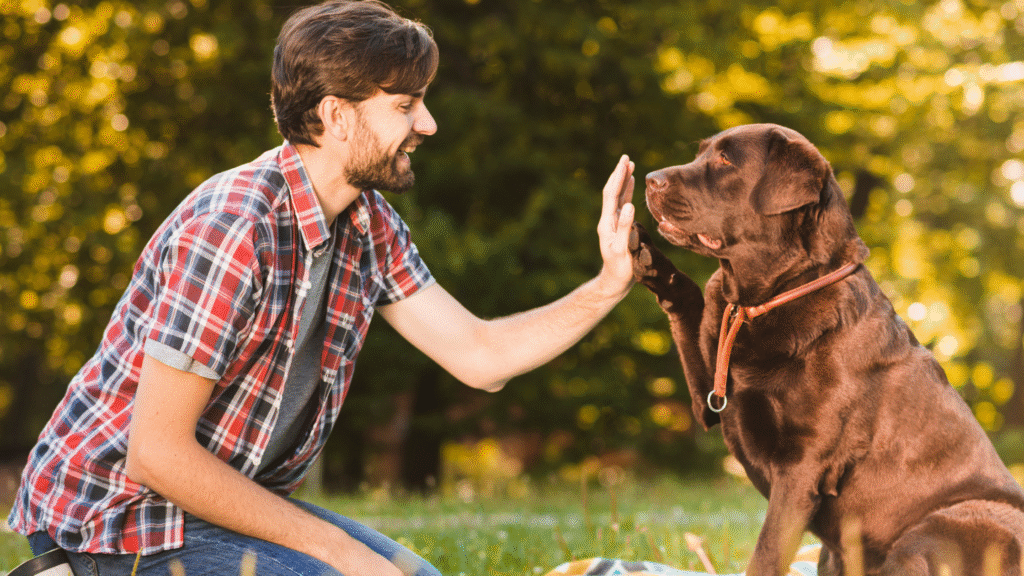

Clicker Training
A little gadget that emits a clicking sound at the proper time is used in clicker dog training. The sound tells the person what conduct you wish to praise. This helps your dog learn by making sure they know exactly what they did to get the treat.
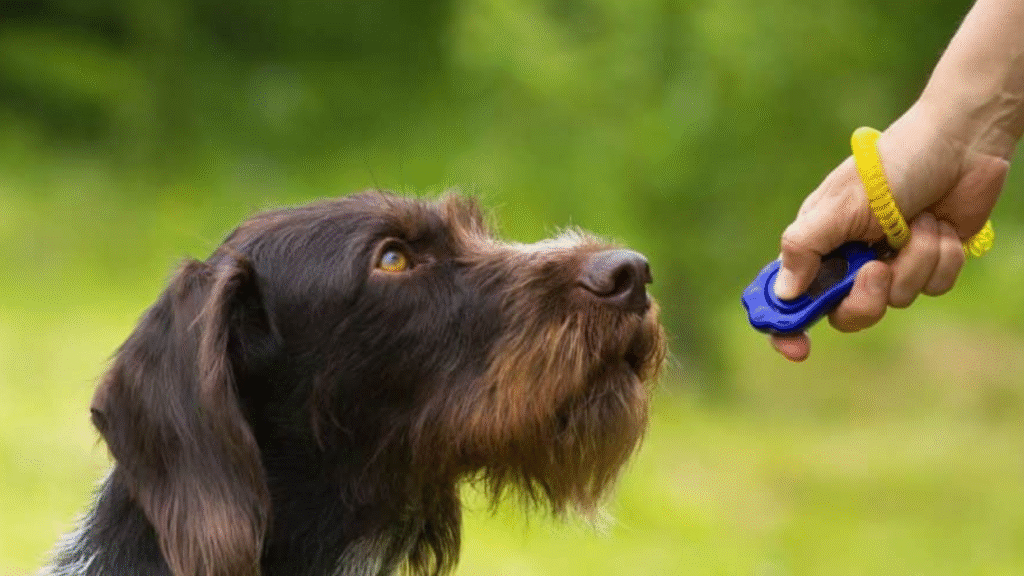

Crate Dog Training
Your dog can relax in a crate, which is a safe, peaceful place. It also helps with housebreaking by teaching you how to control your restroom habits. When done right, crate training helps both pups and older dogs feel safe and have a routine.


Leash Dog Training
It’s important to teach your dog not to yank on the leash so you may walk safely. Loose-leash walking strategies reward your dog for strolling calmly next to you. This makes being outside more fun and less stressful for you and your dog.
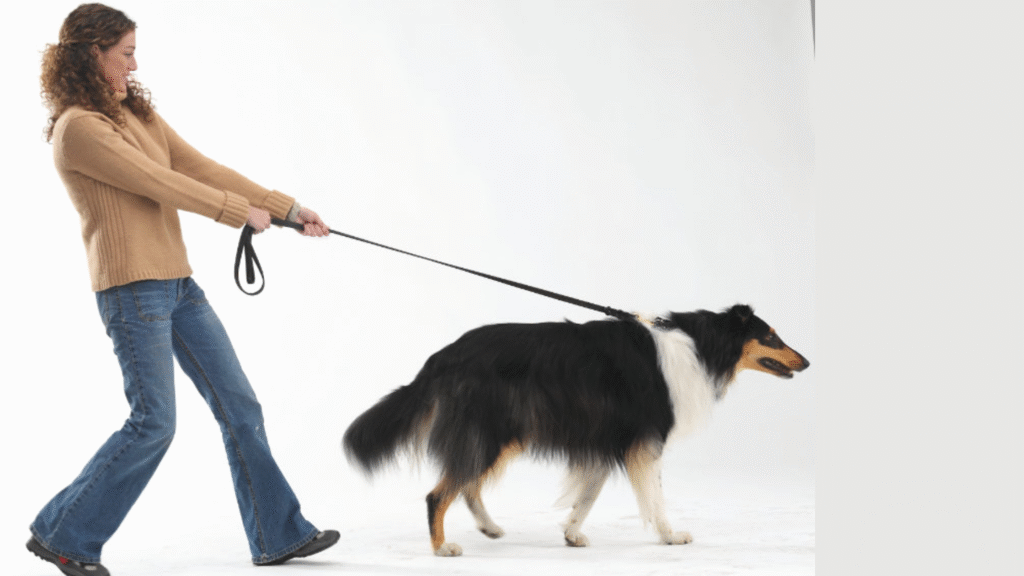

Obedience Classes
Group classes provide structured lessons led by trainers. They are especially helpful for first-time owners. These classes also allow your dog to socialize with other dogs, which builds confidence and reduces anxiety in public spaces.
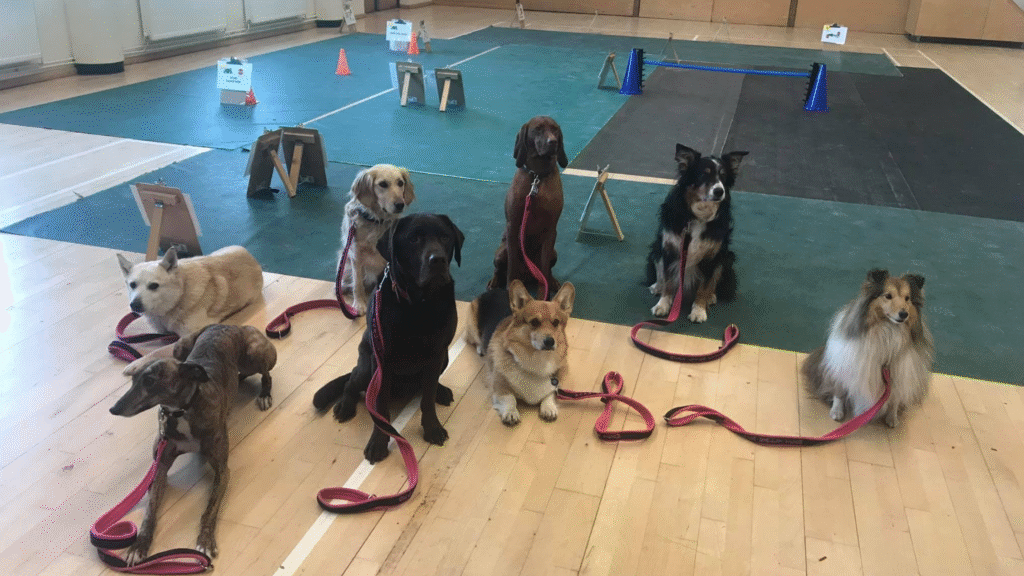

Step-by-Step Guide: How to Train Your Dog
The greatest approach to learn how training a dog is to break it down into small, easy steps. Every step builds on the one before it and helps your dog learn in a good way.
Step 1 – Teach Basic Commands
Begin with simple directions like “sit,” “stay,” “come,” and “down.” To keep your dog attentive, keep dog training sessions brief at first, around five minutes. Learning is entertaining and useful when you get rewards and praise.
Step 2 – Potty and Crate Training
Taking your dog out at the same time every day will help them become used to going to the potty. Put your dog in a crate to help them learn to go outside to do their business. Always give sweets or praise for a job well done.
Step 3 – Leash and Walking Manners
Start leash training in a calm indoor setting or your own backyard. When your dog stops pulling, you can take him for walks outside. For calm, controlled leash behavior, you need to be consistent.
Step 4 – Stop Unwanted Behaviors
Barking, jumping, and chewing are all frequent problems. Use toys, orders, or short training sessions to get your dog to do what you want. Don’t shout at them; instead, help them do greater things.
Step 5 – Advanced Skills
Once you’ve learned the basics, you may focus on recall training, practicing off-leash in safe settings, and exciting tricks like shake or roll over. These things maintain your dog’s mind bright and make your bond stronger.
Dog Training Tools and Gear
Training is easier and more successful with the correct tools. These things, such as harnesses and training classes, can help your dog develop.
Training Collars and Harnesses
A no-pull harness is soft and stops your dog from pulling during walks. Some people use slip collars, but they need to be careful so they don’t hurt themselves. Always pick items that will keep your dog safe and comfortable.
Clickers and Whistles
Clickers are little tools that generate a noise to show that someone is doing something right. You can also use whistles to train your memory. Both help with timing and making sure everyone understands throughout lessons.
Treat Pouches and Rewards
A bag allows you to hold treats as you workout without dropping them. Use small, low-calorie snacks so you can give rewards often without giving too much food. Treats keep your dog interested and on task.
Crates and Playpens
Crates are helpful for housebreaking dogs and offering them a safe, quiet place to sleep. Playpens provide puppies more room to move about while yet keeping them safe.
Recommended Programs
Petsmart dog training has both group and private instruction for puppies and adults. A lot of owners find it easy to use. You might also hire a local trainer or take an online dog training course that works with your schedule.
Dog and Puppy Training Challenges
Training doesn’t always go as planned, even with the best strategy. Some pets have problems that need particular care:
- Being stubborn
- Worry when alone
- Fear or anger
Stubborn Breeds
Some dogs that are independent, like Huskies or Terriers, might not follow commands. They need more time, shorter sessions, and regular schedules. They learn over time with rewards and persistence.
Separation Anxiety
When left alone, dogs who get scared can bark, chew, or walk about. Slow departures and safe toys, together with training routines, help them relax. Gradual practice helps them feel safe.
Aggression or Fear
If your dog is acting aggressive or scared, you should get professional treatment. A skilled trainer can show you safe ways to lower stress and restore trust again. Never penalize fear; instead, work on growing confidence.
Dog Training for Different Goals
Not all dogs are taught for the same reason. Some are friends, while others are trained to work or serve. The correct training for you and your dog relies on what you need and what your dog can perform.
Family Companionship
When you train a family dog, you teach it how to behave around kids, guests, and other pets. Commands like “sit,” “stay,” and “leave it” help keep the home calm and safe.
Guard and Protection Dogs
Professionals should only train security dogs using special programs. To be safe, protective job requires tight adherence and cautious handling.
Service and Therapy Dogs
Before they can work with people, service and therapy dogs need to be certified. They need to learn how to be obedient, be cool in any scenario, and help without getting in the way.
Common Training Mistakes to Avoid
Even owners who mean well make blunders while training. To help your dog learn faster and stay confident, don’t make these mistakes:
- Punishing instead of guiding: Harsh punishment can make people scared and confused. It works better to give positive feedback.
- Commands that aren’t clear: Using different terminology for the same action makes things take longer. Only give one cue for each command.
- Too much training without breaks: dogs lose interest quickly. Make sessions short and do them often.
- Not socializing: Dogs that don’t meet new people, locations, and pets early on may get apprehensive later on.
Conclusion
One of the most important things you can do to make your pet happy is Dog training. It helps your dog learn how to behave and builds a safe, trusting relationship between you and your dog.
Training your dog will help them behave better, lower their stress levels, and keep them safe at home and in public. A dog that has been trained effectively is calmer, easier to handle, and more fun to be around.
Owners need to be patient and stick to their guns. Dog training takes time, but even dogs who are stubborn or older can learn. Every dog can do well if they work hard and get positive feedback.
If you do it well, you’ll not only teach commands, but you’ll also make a bond that lasts a lifetime.
Frequently Asked Questions
How long does it take to train a dog?
You can teach basic commands in a few weeks if you practice every day. It usually takes several months of full dog training to teach your dog how to behave on a leash and correct bad behavior. The most important things that affect how quickly your dog learns are consistency and patience.
Can old dogs learn new commands?
Yes, older and mature dogs can learn new things. Older dogs can learn obedience orders, cease undesirable habits, and even learn entertaining tricks, although it could take them longer than puppies.
What is the best method for dog training?
The best way is to provide positive reinforcement. Giving your dog treats, praise, or toys for good behavior will make them want to do it again. Punishing someone harshly might make them scared and stressed out, but focusing on rewards builds trust and gets results that last.
Is Petsmart dog training effective?
Petsmart dog training works for fundamental things like sit, stay, leash etiquette, and getting along with other dogs. Classes are good for people who have never owned a pet before. But if your dog has major behavior problems, they may require more help than just group courses from certified trainers.
How do I stop my dog from biting?
Use chew toys to change the way you bite and stop playing if you do. Teach puppies how to control their bites early on. Rewards and consistency for mild play are helpful. If your dog keeps biting, talk to a professional trainer for help.

